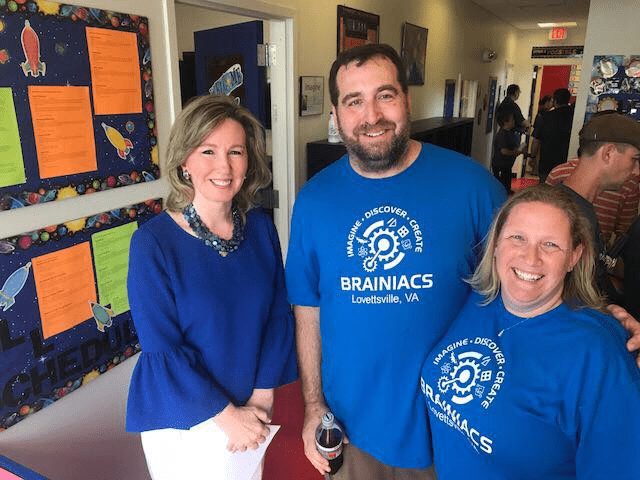
NCI, Inc. Vice President of Cybersecurity and Emerging Technology Josh Salmanson is a Pinnacle Awards finalist in the STEM Advocate of the Year category. Here, Salmanson shares what makes him successful, what rules he should break more and the biggest professional risk he’s ever taken and more.
What key achievements did you have in 2017?
Salmanson: Our STEM journey has been quite an adventure! My wife and I went from ideation to opening Brainiacs in just six months. Our leadership team used a very lean startup mentality honed from many years in GovCon to successfully establish a viable business model. We designed and branded a new educational concept and created a diverse, engaging and immersive STEM curriculum that touches all elements of STEM for ages from pre-K through 12th grade.
All of this stemmed from a moment in time when our (then) 5-year-old-daughter came home from Montessori and proclaimed she couldn’t do math because she was a girl. This comment was all it took to motivate us as parents to fix a major issue at home, in schools and in our community. It was really our personal call to action.
What has made you successful in your current role?
Salmanson: What has made me successful both at NCI and at Brainiacs is having a fantastic and motivated team with a strong proven leadership core that is willing to take calculated chances on pursuing growth in new markets. Of course, experience plays a huge role in how successful the team is, and both NCI and Brainiacs have exceptional leadership teams focused on strong service delivery through operations and pragmatic growth.
What specifically makes Brainiacs stand out from industry competitors?
Salmanson: We made conscious decisions early on to differentiate Brainiacs from other existing STEM franchises. Our goal is to make learning difficult concepts fun, first and foremost. We know schools today have a lot of issues just teaching the foundational STEM concepts. We wanted a safe place for kids to experiment and learn from hypothesis that may or may not work out — experimentation, while making mistakes and learning to collaborate and communicate all at the same time.
We also really wanted to make curriculum decisions that allowed for “aha moments” when kids can see directly how math, science, physics and electronics all come together — integrating understanding and experiencing how integration really happens between cyber and kinetic activities.
Which rule do you think you should break more as a leader?
Salmanson: I think we have all become too concerned with perfection. The most significant thing agile practices have taught me is that it’s better to make frequent mistakes and perform ample smaller course corrections than to be married to an inflexible plan.
It’s also OK as a leader to admit being wrong. It doesn’t make you weaker or less decisive, it just means sometimes your intuition or your perception of reality needs to flex with circumstances. At the end of the day, you just want the team and customers to be successful.
What is the biggest professional risk you’ve ever taken?
Salmanson: The largest professional risk I’ve taken was in 2011 when I voluntarily left Lockheed Martin. I was pretty sure I would be successful, but it can be daunting to challenge yourself and put everything on the line. It turned out to be a very liberating experience that rekindled my entrepreneurial spirit and forced me to sharpen some really important personal skills that had atrophied over a decade while at a large company.
This personal reinvention process is something all leaders should challenge themselves with constantly, it has made me a much better peer, leader and employee because of the journey.

